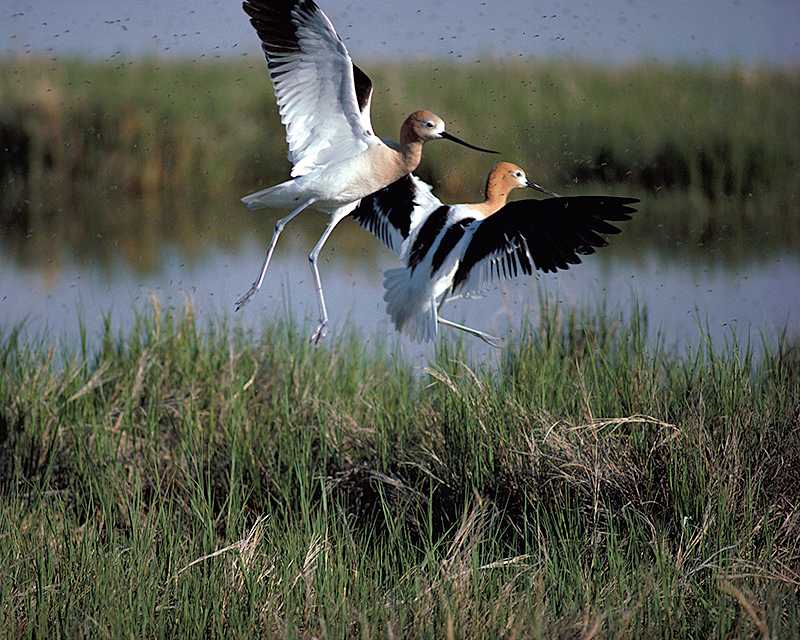National Wildlife Refuge System consists of about 550 refuges established by the United States government to protect and increase wildlife and their habitats. The smallest refuge is Mille Lacs National Wildlife Refuge, two islands in Minnesota with a total area of about 3/5 acre (0.2 hectare). The largest refuge is Yukon Delta National Wildlife Refuge, which has almost 20 million acres (8 million hectares) in Alaska. The national refuges are managed by the U.S. Fish and Wildlife Service.
Each refuge is established for specific purposes. Most refuges were established to protect migratory birds. Some refuges also protect species of wildlife that are in danger of becoming extinct. These species include bald eagles, brown pelicans, whooping cranes, sea turtles, and manatees. Refuges have played a major role in rebuilding the populations of buffaloes, elk, trumpeter swans, and pronghorns.

People also benefit from refuges. Refuges protect marshes, swamps, and other wetlands, which help control flooding, filter pollutants, and refill the supply of underground water. Most refuges are open to the public, and many offer educational programs on protecting the environment. Hunting and fishing are permitted on some refuges, but these activities are strictly regulated.
The first wildlife refuge in the United States was established in 1903 on Pelican Island, off the east coast of Florida. President Theodore Roosevelt created this refuge to help protect brown pelicans and other birds that nest on the island. More refuges were set up through the years. In 1966, the U.S. Congress made these refuge areas the National Wildlife Refuge System.
